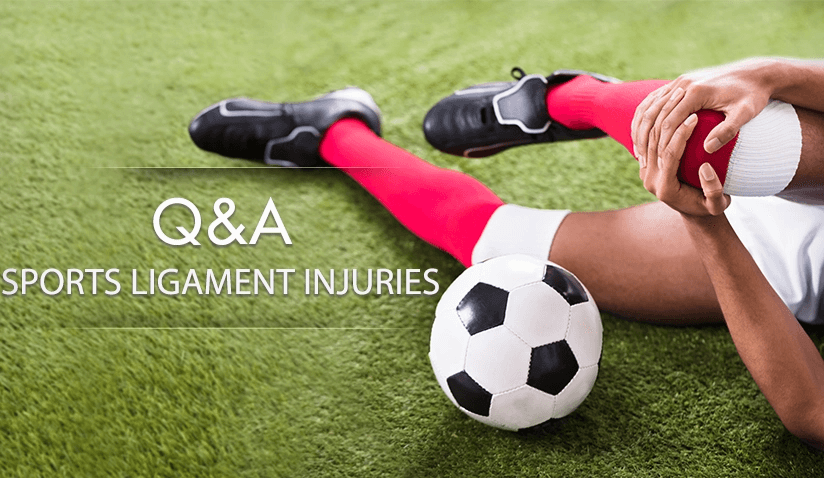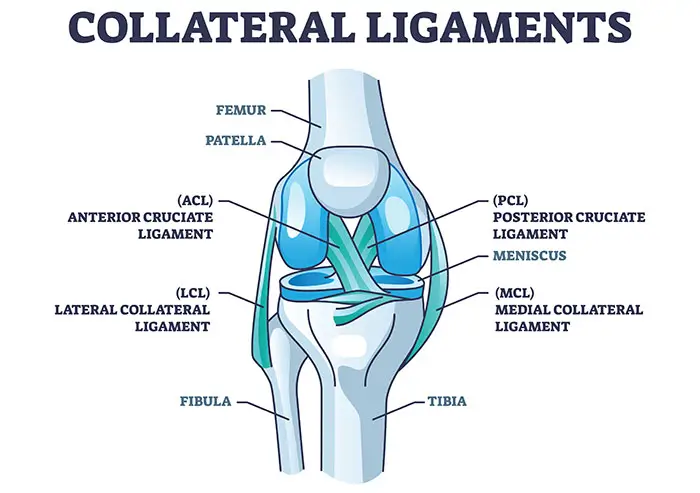Doctor Q&A: Sports Ligament Injuries, Spotlight on the ACL

Athletes are constantly pushing their limits, but this can come at a cost. Sports ligament injuries, particularly anterior cruciate ligament (ACL) tears, are a common concern. This Q&A with Dr. Manuel Leyes Vence, Head of Traumatology at Olympia Medical-Surgical Center, dives deep into these injuries, exploring their causes, diagnosis, treatment options, and even the latest advancements in rehab and prevention. Whether you are a fitness enthusiast or an elite athlete, this conversation offers valuable insights into keeping your joints healthy and strong.
1. What is the most relevant sports ligament injury in your experience?
The most relevant ligament injury in sports is an anterior cruciate ligament (ACL) tear. The ACL is a crucial knee ligament that acts like a brake, restraining the shinbone's forward motion relative to the thighbone. ACL tears often occur during forceful movements such as landing from a jump with a sudden change in direction, pivoting or stopping suddenly, or due to direct contact to the knee. Hence, ACL injuries are prevalent in many sports, such as soccer, basketball, football, and skiing.

2. How are sports ligament injuries graded based on severity?
Sports ligament injuries are graded by assessing the degree of ligament damage, ranging from mild to severe. In Grade I injuries, the ligament is stretched but not torn, leading to mild symptoms such as minimal pain, swelling, and tenderness at the injury site. The joint feels stable with minimal functional limitations, and physical therapy aids recovery, which can usually take a few weeks.
Grade II injuries represent a moderate tear, where some ligament fibers are partially torn. This can cause moderate pain, swelling, and a sense of instability in the knee. You might have difficulty in bearing weight or performing certain movements. Recovery can take several weeks to months, often with physical therapy and bracing.
In Grade III injuries, the ligament is completely ruptured, causing severe pain, swelling, and significant joint instability, with the patient unable to bear weight or walk. This is the most severe form of injury, where recovery might take several months, often requiring surgery and physical therapy. These grades help guide treatment and recovery plans for individuals with ligament injuries.
Doctors may use stress X-rays or MRIs to confirm the severity of the ligament injury and identify any associated bone damage. They may also assess your range of motion, strength, and joint stability to grade the injury
3. Are ACL injuries more common in females?
Yes, ACL injuries are three to four times more common in females than in males. This increased prevalence in females is attributed to anatomical, hormonal, neuromuscular, and biomechanical differences. The skewed incidence holds true for female athletes as well. Studies involving different sports, such as football, handball, and basketball, report that female athletes have a two to eight-fold higher risk of experiencing an ACL injury than their male counterparts.
4. What is the frequency of ACL injuries in elite soccer players?
Research shows that ACL injuries are relatively common among elite soccer players, with rates ranging from 0.2 to 0.4 injuries per 1000 player-hours of exposure. The Elite Club Injury Study (ECIS) of UEFA, the largest and oldest injury surveillance program in football, found that an ACL tear occurs every two seasons in each club. This statistic holds true for Real Madrid, for instance. Marco Asensio was injured five years ago in 2019, and this year, Courtois, Militao, and Alaba suffered similar ruptures.
5. What happens if an ACL ligament injury is left untreated?
Leaving an ACL injury untreated increases your risk of developing chronic knee instability and can cause it to “give way” during physical activities. This instability makes it difficult to participate in sports or even perform daily tasks. Additionally, an unstable knee is more prone to further injuries, such as meniscus tears or damage to other ligaments. Over time, untreated ACL injuries can result in early-onset osteoarthritis due to the continued stress and abnormal movement patterns in the knee joint - half of young people diagnosed with a torn ACL or meniscus may develop osteoarthritis 10 to 20 years later, leading to pain and limited mobility.
This condition arises from a combination of factors, such as the damage from the original ACL or meniscus tear setting off a chain reaction within the joint, triggering the development of osteoarthritis. Untreated ACL injuries can thereby lead to reduced function and strength, as muscle atrophy and loss of strength in the surrounding muscles may occur due to decreased activity and ongoing instability. Persistent pain, swelling, and inflammation can also become chronic issues, significantly affecting the quality of life. To prevent long-term complications and regain knee stability and function, getting the right diagnosis and treatment is crucial.
6. What happens if an ACL ligament injury is misdiagnosed or mistreated?
The misdiagnosis or mistreatment of an ACL injury may lead to the above-described complications, chronic instability, further injuries, and early-onset arthritis. An ACL tear can be mistaken for other injuries with similar symptoms, such as meniscus tears, patellar tendinopathy or dislocation, or ligament sprains. However, these injuries often lack the telltale "giving way" sensation during movement that an ACL tear can cause. If you experience ongoing knee instability or persistent pain that significantly impacts your daily activities or ability to return to sports, it is advisable to consult an orthopedic sports medicine specialist for accurate diagnosis and treatment.
7. Have there been any recent advancements in diagnostics for sports ligament injuries?
Recent advancements in diagnostics for sports ligament injuries include improved imaging techniques such as 3 tesla MRI and functional ultrasound (USG). Performing a functional USG of the injured and uninjured knee helps to note the difference in translation, i.e., the abnormal movement of your shinbone relative to your thighbone. Precise computerized arthrometers are also used, which can objectively evaluate knee stability through dynamic tests.
Biomechanical analysis tools help assess movement patterns contributing to injuries, guiding rehabilitation. Research into biomarkers aims to develop indicators for injury presence and severity. Additionally, computer-assisted diagnosis using AI enhances accuracy and efficiency. These advancements offer promising opportunities for precise assessments and tailored treatment plans.
8. What are the benefits of early intervention in ACL injuries?
Early intervention in ACL injuries offers several benefits, including prevention of further damage and preservation of joint health, reduced risk of complications, optimized treatment options, improved functional outcomes, and faster recovery. By rapidly stabilizing the shinbone to the thigh bone following injury, joint looseness and the risk of future degenerative changes can also be mitigated.
9. Can ACL ligament injury be treated conservatively without surgery?
While surgery is often necessary for most ACL injuries, conservative treatment is an option for partial tears, low-demand (recreationally inclined) patients, and non-pivoting sports. This approach includes physical therapy, bracing, activity modification, and pain management. However, it is important to note that conservative treatment may not completely restore pre-injury function. Activity level, age, and health status all play a role in determining surgical vs. non-surgical options.
10. What are the factors involved in selecting a surgical approach? What is the most common type of surgery performed on athletes with ACL injuries?
For athletes, choosing an appropriate ACL surgery hinges on factors like injury severity, the athlete's specific sport and position, age, activity level, and overall knee stability. However, one of the most commonly performed surgeries for ACL injuries in athletes is ACL reconstruction. It is often described as a custom-made suit because the same procedure does not fit all athletes. ACL reconstruction surgery involves replacing the torn ACL with a graft, typically taken from another part of the patient's body (autograft) or from a donor (allograft). Small incisions and specialized instruments allow surgeons to perform this procedure arthroscopically, minimizing tissue disruption and promoting quicker recovery. While ACL reconstruction is a standard surgical option for athletes aiming to return to high-demand sports that involve pivoting, cutting, and jumping, the specific surgical technique and graft choice may vary based on individual factors and the surgeon’s preference.
11. What are the recent advancements in ACL surgery?
Recent advancements in ACL surgery have focused on improving outcomes and reducing recovery time. Anatomic reconstruction aims to closely match the original ligament's anatomy and function, while biological augmentation explores the use of PRP or stem cell therapy for enhanced healing. Computer-assisted surgery enhances precision, and accelerated rehabilitation protocols allow for faster recovery. These advancements offer promising opportunities to improve the effectiveness and safety of ACL surgery.
12. What are the latest advancements in rehab for sports ligament injuries?
The latest advancements in rehab for sports ligament injuries include the use of cutting-edge technologies such as virtual reality (VR) and augmented reality (AR) for immersive and interactive rehabilitation exercises. Additionally, personalized and data-driven rehabilitation programs tailored to individual athletes' needs are becoming more common, leveraging integrated wearables and sensors to track progress and provide immediate feedback for optimized performance. These innovative approaches aim to optimize rehabilitation outcomes and enhance the overall recovery process for athletes with ligament injuries.
13. What are the specialized injury prevention strategies and sports readaptation techniques for ligament injuries that have shown efficacy?
Preventing and rehabilitating ligament injuries involves a multi-faceted approach. Strength training to build muscle around ligaments, proprioception exercises for balance and coordination, correcting technique, and using appropriate gear are key preventative measures. For rehabilitation, a gradual progression through exercises, functional training mimicking sports movements, balance work, and sport-specific drills are essential. Supportive bracing may aid in stability during recovery. Athletes also benefit from education and counseling on injury management and prevention. Collaborating with experienced healthcare professionals ensures individualized and effective rehabilitation plans.

Dr. Manuel Leyes Vence is the Head of Traumatology at Olympia Medical-Surgical Center.
He is a trusted advisor for elite sports organizations worldwide, including Real Madrid FC, Atletico de Madrid, and the Spanish National Handball Team. Throughout his career, Dr. Leyes Vence has operated on numerous national and international athletes, including Ballon d'Or winners, world champions, and Olympic medalists.
His expertise extends to professional footballers across Europe's top leagues, having performed surgeries on players from teams in La Liga, Premier League, Bundesliga, Serie A, and Primeira Liga.
Dr. Leyes Vence's dedication to the field is further reflected in his prolific research contributions, with over 250 presentations at national and international congresses.

Olympia, a Quirónsalud project, combines patient-centered medicine with cutting-edge health trends. Its focus on physical, mental, and emotional well-being extends beyond treatment, promoting prevention, personalized healthcare services, and sports participation. This innovative and sustainable approach aims to empower individuals to thrive and generate a positive ripple effect in society.
As an international reference center in sports traumatology, the center performs over 1000 ACL reconstructions annually. Specialists at Olympia serve as medical consultants for Real Madrid FC, Atletico de Madrid, Getafe FC, the Spanish Federations of Athletics, Gymnastics, and Judo, the World Padel Tour, and the Spanish National Handball Team.
References:
Featured Blogs



